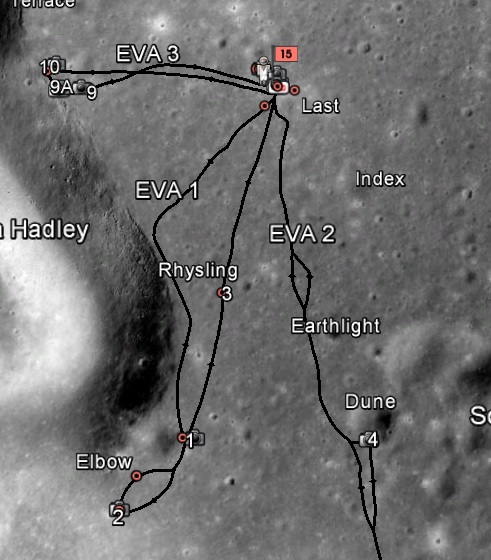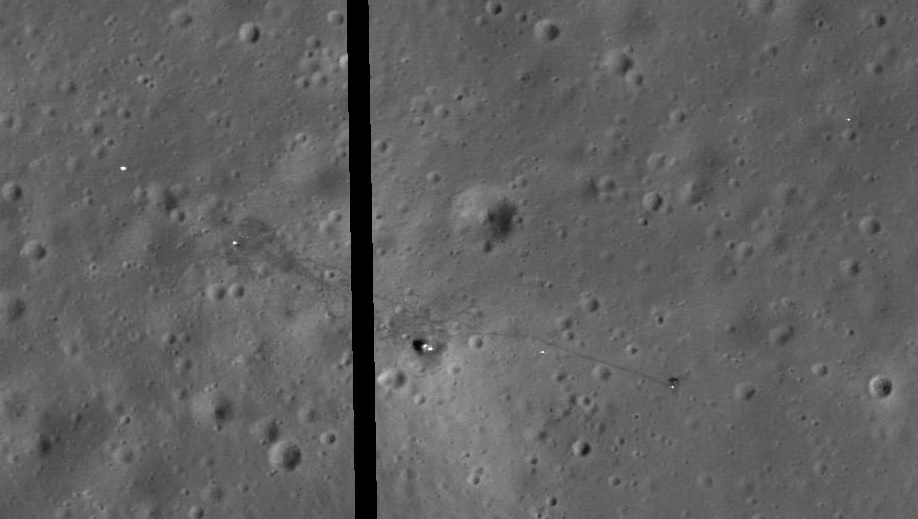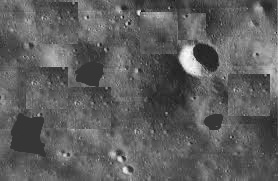It looks like you're using an Ad Blocker.
Please white-list or disable AboveTopSecret.com in your ad-blocking tool.
Thank you.
Some features of ATS will be disabled while you continue to use an ad-blocker.
share:
Dawn won't be taking any more pictures of Ceres until April 10th, just under five weeks from today. There will probably be a delay of most of another
week, before these images can be processed and released to the public.
The Sun currently lies in the same direction as Ceres, from Dawn's point of view. This places the part of Ceres visible to Dawn in darkness. This isn't going to change anytime soon, as Dawn will slowly continue to approach Ceres from the unlit side.
There is the additional problem that with the Sun in this position, any attempt at picture taking would probably damage Dawn' camera with excessive brightness.
The images taken on April 10th will have about 19 percent better resolution that the best ones currently available. Improvement in image resolution will continue, thereafter; by another 68 percent on the April 14th images, and a further 71 percent on April 23rd.
The Sun currently lies in the same direction as Ceres, from Dawn's point of view. This places the part of Ceres visible to Dawn in darkness. This isn't going to change anytime soon, as Dawn will slowly continue to approach Ceres from the unlit side.
There is the additional problem that with the Sun in this position, any attempt at picture taking would probably damage Dawn' camera with excessive brightness.
The images taken on April 10th will have about 19 percent better resolution that the best ones currently available. Improvement in image resolution will continue, thereafter; by another 68 percent on the April 14th images, and a further 71 percent on April 23rd.
Wildspace, thanks for that link.
originally posted by: wildespace
originally posted by: 0bserver1
Why isn't Ceres add up to the nine planets of our solar system. ? Does a dwarf planet not count as a real planet or something?
First they call it an asteroid now they call it a dwarf planet .
I would say if its spherical and has a certain mass and size you could label those bodies as planets or moons when orbiting planets. I mean look at deimos and phobos they look more asteroid then moons to me..?
One of the key definitions for a planet is that is has "cleared its neighbourhood" of other similarly-sized objects, i.e. it is gravitationally dominant in its orbit. This is not the case for Ceres, as it's sharing its orbital neighbourhood with asteroids in the asteroid belt. Same goes for Pluto and the Kuiper belt.
I hope the IAU is capable of considering an alternative term, "Cluttered its Neighborhood". Considering the solar system is billions of years old, and if the IAU wants to hold on to their planet formation theory, they might also consider that the debris in these planets neighborhoods are the remnants of very old failed planets, which given the period of time is more logical to consider, than planets that never fully formed
This only goes to show that the old adage is true after all. God does not play dice with the universe, he plays marbles...............his are just
bigger than ours.................
originally posted by: All Seeing Eye
and if the IAU wants to hold on to their planet formation theory, they might also consider that the debris in these planets neighborhoods are the remnants of very old failed planets, which given the period of time is more logical to consider, than planets that never fully formed
What's the difference between a "failed planet" and a "planet the never fully formed". The stuff leftover in the solar system (asteroids, comets, etc) are the remnants of the stuff from which the planets formed; therefore its stuff that failed to form into/planets become part of the planets.
Of course, any comet or asteroid that strikes a planet, such as comet Shoemaker-Levy 9 that struck Jupiter in 1994 -- or even the Chelyabinsk meteor that exploded over Russia in 2013 -- can still become parts of the planets.
The Chelyabinsk meteor was a piece of debris leftover from the formation of the solar system, but now it is part of the Earth (as is virtually every meteor we see streak across the sky at night).
edit on 3/7/2015 by Soylent Green Is People because: (no reason given)
yeah except... if you put the earth where pluto is right now it could not clear it's neighborhood and therefore would not fit this definition of
planet.
so the definition is a crock.
so the definition is a crock.
originally posted by: stormbringer1701
yeah except... if you put the earth where pluto is right now it could not clear it's neighborhood and therefore would not fit this definition of planet.
so the definition is a crock.
Earth would not have formed there.
...And that's sort of the point -- a planet (IAU definition) forming in that area of the solar system and in that orbit was not in the cards.
that sort of depends on a lot of random factors. like the density of material available to form planets and gravitational interference by the gas
giants. and it is still possible that there are earth sized bodies further out there as i read in recent science articles. perturbations of pluto and
several other kuiper belt objects support that.
This is just one such article:
www.universetoday.com...
also though i may be wrong i think earth sized planets or super earths have been found at further distances from thier parent stars since exoplanets have started being discovered.
This is just one such article:
www.universetoday.com...
also though i may be wrong i think earth sized planets or super earths have been found at further distances from thier parent stars since exoplanets have started being discovered.
edit on 7-3-2015 by stormbringer1701 because: (no reason given)
originally posted by: stormbringer1701
also though i may be wrong i think earth sized planets or super earths have been found at further distances from thier parent stars since exoplanets have started being discovered.
I didn't only mean that distance from the Sun. I also meant the orbit tilted far out of the ecliptic, and an orbit that takes it inside the orbit of Neptune on occasion.
The point I was making is that you can't just say "If we put Earth out there where Pluto is, would it meet the AIU criteria for a Planet?" because the fact is that a planet meeting the AIU criteria did NOT form out there, possibly because of (as you mentioned) the many factors that go into planet formation.
I don't think the "what if we put Earth where Pluto is" argument is a valid one. It's a moot argument because If an Earth-sized planet was where Pluto is, that whole region of the solar system would be different, and that planet's orbit probably would not be like Pluto's tilted and Neptune-crossing orbit.
edit on 3/7/2015 by Soylent Green Is People because: (no reason given)
a reply to: Soylent Green Is People
What I am suggesting is that there was, a full sized planet in those "Asteroid" bands that failed in staying together as a planet and for one reason or another, failed to maintain itself as a planet. I suggest that the "Asteroids" instead of being random leftovers from the creation of the universe are actually debris from those planets. Mountains, rivers, valleys, meadows, life forms, water, etc. Give those things millions or even hundreds of millions of years floating around in space, bumping into each other, and or being shot like pool balls into other planets, would be hardly identifiable for what they once were.
Pluto and Ceres, since they kept their orbits, and are spherical, could then be viewed as the planets, core, regardless of what you would like to call it. Asteroid, dwarf planet, planet seed, or the more controversial, central sun.
Science may have put the cart before the horse when they consider that universes came first. It may be, solar systems were first on the scene. If that be the case, all other things come from planet formation, or Suns. It gives the subject a whole new perspective on "Astrophysics".
What I am suggesting is that there was, a full sized planet in those "Asteroid" bands that failed in staying together as a planet and for one reason or another, failed to maintain itself as a planet. I suggest that the "Asteroids" instead of being random leftovers from the creation of the universe are actually debris from those planets. Mountains, rivers, valleys, meadows, life forms, water, etc. Give those things millions or even hundreds of millions of years floating around in space, bumping into each other, and or being shot like pool balls into other planets, would be hardly identifiable for what they once were.
Pluto and Ceres, since they kept their orbits, and are spherical, could then be viewed as the planets, core, regardless of what you would like to call it. Asteroid, dwarf planet, planet seed, or the more controversial, central sun.
Science may have put the cart before the horse when they consider that universes came first. It may be, solar systems were first on the scene. If that be the case, all other things come from planet formation, or Suns. It gives the subject a whole new perspective on "Astrophysics".
Moar Ceres is needed:



Thank you, that was beautiful



originally posted by: All Seeing Eye
a reply to: Soylent Green Is People
Science may have put the cart before the horse when they consider that universes came first. It may be, solar systems were first on the scene. If that be the case, all other things come from planet formation, or Suns. It gives the subject a whole new perspective on "Astrophysics".
Thank you, that was beautiful
All of these photos are enhanced though, right? In reality Ceres is covered in darkness and would be barely visible with the naked eye.
What do you mean "covered in darkness?" Dawn is there in orbit around it. The sun lights it up just like it lights up Earth. Have you never seen a picture of a planet before?
originally posted by: Asynchrony
All of these photos are enhanced though, right? In reality Ceres is covered in darkness and would be barely visible with the naked eye.
originally posted by: drakus
Moar Ceres is needed:
So I'm curious... if the "lights" on Ceres are just sunlight reflecting off of ice either on the surface or in the atmosphere, why are they showing up on the dark side?
Is the reflective cloud high above the surface, causing the sunlight to hit it over the horizon?
edit on 3/8/2015 by Answer because: (no reason
given)
a reply to: Answer
I think (obviously I don't know) that since the sun is still lighting the back side of the craters in the photo it would also light the ice?
Great question...
ETA: Or, Zargweep still hasn't turned the damned nav lights off!
This one mystery is the best "space/alien" mystery we've had in YEARS. I personally can't wait to find out what these lights/reflections truly are. Think we will?
I have my doubts about that.
I think (obviously I don't know) that since the sun is still lighting the back side of the craters in the photo it would also light the ice?
Great question...
ETA: Or, Zargweep still hasn't turned the damned nav lights off!
This one mystery is the best "space/alien" mystery we've had in YEARS. I personally can't wait to find out what these lights/reflections truly are. Think we will?
I have my doubts about that.
edit on 3-9-2015 by Springer because: (no reason given)
a reply to: Asynchrony
That's moon.
This poster has shown that:
Here AshOnMyTomatoes
That's moon.
This poster has shown that:
I thought I'd seen that before. That's Cone Crater on the Moon. Apollo 14's landing site. Matching pic is about halfway down the page. I used an image lookup and it turned up several matches. Let's try and get our ducks in a row here, guys.
Here AshOnMyTomatoes
edit on 3/9/2015 by Deaf Alien because: (no reason given)
originally posted by: Springer
a reply to: Answer
. Think we will?
I have my doubts about that.
I'm concerned as well about NASA releasing discoveries, especially after what I suspect is a umm, coverup. Did someone neglect to tell us something about Apollo 15??
This is what they claimed..

This is what they did....

Anyone notice a discrepancy??
Most people wont get my humor here but the light is most defenetlly coming from the great computer within it hallowed halls
originally posted by: All Seeing Eye
originally posted by: Springer
a reply to: Answer
. Think we will?
I have my doubts about that.
I'm concerned as well about NASA releasing discoveries, especially after what I suspect is a umm, coverup. Did someone neglect to tell us something about Apollo 15??
This is what they claimed..
This is what they did....
Anyone notice a discrepancy??
The two images have very different level of zoom between them. You can zoom into the Google Moon image enough to match it up with the LRO image, and you'll see that some of the tracks are visible. But the imagery in Google Moon is very low-rez, so it won't show all those finer details and tracks.
Instead, you can compare that LRO image to the film footage they shot from the LM during liftoff: www.youtube.com...
For more distant excursions, the astronauts rode a buggy rover, which left tracks of varying visibility (sometimes being extremely hard to make out) due to the varying depth of dust over the bedrock.
new topics
-
Weinstein's conviction overturned
Mainstream News: 46 minutes ago -
Supreme Court Oral Arguments 4.25.2024 - Are PRESIDENTS IMMUNE From Later Being Prosecuted.
Above Politics: 2 hours ago -
Krystalnacht on today's most elite Universities?
Social Issues and Civil Unrest: 2 hours ago -
Chris Christie Wishes Death Upon Trump and Ramaswamy
Politicians & People: 2 hours ago -
University of Texas Instantly Shuts Down Anti Israel Protests
Education and Media: 5 hours ago -
Any one suspicious of fever promotions events, major investor Goldman Sachs card only.
The Gray Area: 7 hours ago -
God's Righteousness is Greater than Our Wrath
Religion, Faith, And Theology: 11 hours ago
top topics
-
VP's Secret Service agent brawls with other agents at Andrews
Mainstream News: 16 hours ago, 11 flags -
Nearly 70% Of Americans Want Talks To End War In Ukraine
Political Issues: 16 hours ago, 6 flags -
Krystalnacht on today's most elite Universities?
Social Issues and Civil Unrest: 2 hours ago, 6 flags -
Sunak spinning the sickness figures
Other Current Events: 16 hours ago, 5 flags -
Supreme Court Oral Arguments 4.25.2024 - Are PRESIDENTS IMMUNE From Later Being Prosecuted.
Above Politics: 2 hours ago, 5 flags -
Weinstein's conviction overturned
Mainstream News: 46 minutes ago, 4 flags -
Electrical tricks for saving money
Education and Media: 14 hours ago, 4 flags -
University of Texas Instantly Shuts Down Anti Israel Protests
Education and Media: 5 hours ago, 2 flags -
Any one suspicious of fever promotions events, major investor Goldman Sachs card only.
The Gray Area: 7 hours ago, 2 flags -
Chris Christie Wishes Death Upon Trump and Ramaswamy
Politicians & People: 2 hours ago, 1 flags
active topics
-
Chris Christie Wishes Death Upon Trump and Ramaswamy
Politicians & People • 8 • : network dude -
University of Texas Instantly Shuts Down Anti Israel Protests
Education and Media • 101 • : theatreboy -
Nearly 70% Of Americans Want Talks To End War In Ukraine
Political Issues • 79 • : Consvoli -
Supreme Court Oral Arguments 4.25.2024 - Are PRESIDENTS IMMUNE From Later Being Prosecuted.
Above Politics • 22 • : matafuchs -
Remember These Attacks When President Trump 2.0 Retribution-Justice Commences.
2024 Elections • 57 • : TzarChasm -
Weinstein's conviction overturned
Mainstream News • 9 • : chiefsmom -
-@TH3WH17ERABB17- -Q- ---TIME TO SHOW THE WORLD--- -Part- --44--
Dissecting Disinformation • 670 • : cherokeetroy -
British TV Presenter Refuses To Use Guest's Preferred Pronouns
Education and Media • 159 • : 5thHead -
HORRIBLE !! Russian Soldier Drinking Own Urine To Survive In Battle
World War Three • 40 • : Myhandle -
President BIDEN Vows to Make Americans Pay More Federal Taxes in 2025 - Political Suicide.
2024 Elections • 144 • : underpass61

